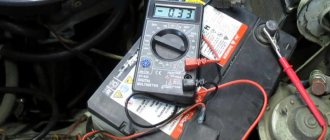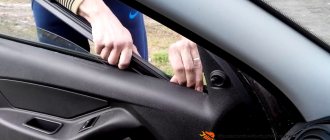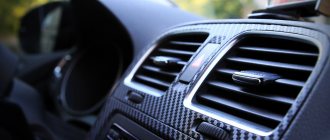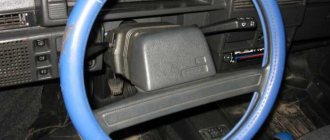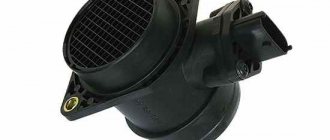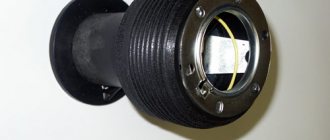There is nothing difficult in eliminating scratches in the interior of a vehicle yourself, but some of them can make you waste a lot of time choosing the right product. How to remove scratches from plastic using a hair dryer, a special pencil or polishing agents? Which method is most effective and is it suitable for all types of damage?
In the modern world, many things and parts are made of plastic, this trend is easy to explain - the material is easy to use and is lightweight. Strength indicators depending on the composition are also high, but not one hundred percent. One way or another, one day the question will come to you - how to remove scratches from plastic, what means are the safest and most effective?
When it comes to vehicle components, damage often appears on the doors or dashboard. It's all about the location of phones, keys and other items of use in these areas. The key to effectively eliminating scratches is careful handling of the surface and the material used.
There are many methods and they all differ from each other, and the main factor of choice is the location of the scratch, its size and depth, and the color of the plastic. In some cases, you won't be able to do anything other than mask the damage, but often you can get rid of it completely.
You can find more detailed information on how plastic bumpers are repaired in the article by our specialist.
You may be interested in our expert’s article on how to prevent scratches using Gravitex for cars.
Types of scratches
To understand how to remove scratches on plastic, it is worth studying the nature of their occurrence.
- Often the plastic in the car interior deteriorates due to minor scratches. There are many of them and they form a kind of web between themselves, thanks to which you have to forget about the attractive appearance of the surface. However, masking such defects is a simple matter; even getting rid of them completely will not be difficult.
- Dealing with deep scratches is more troublesome. Simple methods do not always make it possible to even disguise such defects, let alone completely eliminate them. Next, you can familiarize yourself with radical ways that will allow you to avoid expensive repairs.
- Another type of damage in the car interior is associated with exposure to UV rays on the plastic surface. Alternatively, the surface of the dashboard under the influence of the sun loses color and becomes faded, which in no way adds solidity to the car in combination with scratches. This situation is the most problematic and requires a complete replacement of the interior surface.
- The overhaul option also applies to situations where scratches appear on plastic with a corrugated structure.
Helpful information
Tips for removing scratches from car plastic:
- when using polishes, you need to ensure access to fresh air in the room - inhaling an excessive amount of even the safest polishes will lead to dizziness and deterioration of well-being;
- before starting to process a part located in a visible place, you need to test the chosen method on an unnecessary plastic product;
- when using polish, it is necessary to correctly calculate the amount of the product - its excess will negatively affect the quality of the work performed;
- You need to apply the substance to treat parts on a cloth, and not on the plastic itself.
A lot of useful and important information about methods and means of removing scratches on a car can be found here.
Removing small cracks
The following tools allow you to quickly eliminate minor cracks and at the same time preserve the condition of your wallet. Their effectiveness is based on the principle of polishing and preparatory work should consist of thorough cleaning of the surface being treated and its further drying.
Wax is used to polish plastic surfaces. It must be used in combination with soft, dry cloth. Movements during rubbing should be circular. A cotton swab will help get rid of excess wax. A good alternative to wax is GOI paste or machine oil.
Glass cleaning products
Glass cleaning products must be used according to the same principle. In combination with a dry cloth, the action of such compositions is quite effective in relation to minor scratches.
Glass polishes
Products used for polishing glass surfaces with abrasive components are also suitable for plastic. In the case of small scratches, this method not only masks them, but removes them completely. Hydrofluoric acid can act as an abrasive component, so if there are elements on the surface that are not made of plastic or glass, refrain from using this option.
Polish for copper and silver
Copper and silver polishes can be used in tandem with microfiber or a dry cloth. Rubbing should be continued until the trace of cracks is visually invisible.
Household or construction hair dryer
A household or construction hair dryer will allow you to quickly deal with a minor defect. Be sure to clean the surface and dry it. Start heating the area with the scratch with a hairdryer, but do not hold it in one place. Wait until the plastic begins to melt slightly. Do not touch the restored surface with your hands until it has cooled down.
Displex
This product can be purchased at a hardware store and is sold in tube form. The principle of operation is similar to the previous method with melting plastic. The difference is that the plastic microparticles in the composition are already ready for use and there is no need to waste time on additional melting. Rub the product in for two minutes using any dry and soft material. If after the first attempt your efforts are not crowned with success, you can try several more times.
Interior renovation
If you are unable to overcome a deep scratch, no matter what methods you use, you will have to admit that all that remains is to completely restore the damaged element.
- Clean the surface thoroughly and dry it.
- Sand the plastic if it is not embossed. For a smooth surface, you can use sandpaper.
- Use a spray primer product. The composition should not react with the surface and you need to make sure of this before purchasing.
- The panel should have several layers of primer, after which it will be time to use an abrasive material to achieve a perfectly smooth surface.
- Use putty in areas with large cracks.
- Purchase a suitable paint to cover the panel after the repair work is completed. If necessary, you can additionally use varnish, but drivers often refuse this step, since glare appears on such a surface, and they interfere with comfortable driving.
How to get rid of deep marks?
An effective method for dealing with deep damage to a plastic surface is sandpaper (sandpaper) with different grain sizes. It is moisture resistant, has abrasive properties, and is suitable for preparation, grinding and polishing.
Mode of application:
- wet the 800-grit sandpaper, this will soften the particles and prevent the appearance of new defects on the plastic;
- sand the damage in a circular motion until the scratch disappears;
- treat the surface with a damp, clean cloth;
- wipe the plastic dry;
- perform final sanding with fine sandpaper (grit size - 1200-1500);
- polish the surface with a special product.
Polishing pastes and sprays should be intended for processing plastic or acrylic; industrial compositions for paint and varnish surfaces are not suitable.
Transparent plastic
Transparent plastic is a different story, and a very delicate one at that. To eliminate scratches on this type of material, you can use jewelry polish. An abrasive for glass or a paste for computer disks is also suitable. A mixture of Vaseline and polish will help you in this situation too. In all cases mentioned, use soft microfiber.
Elements made of plastic are found in the interior of any car. The only difference is the quality of this plastic, but the fact remains that it can be scratched. Remember, if the scratch is small, you can definitely handle it on your own. If we are talking about deep damage, especially on an expensive surface, double-check your abilities.
Damage to upholstery elements can greatly deteriorate the impression of the interior and make it look worn out or unkempt. Before replacing scratched trim, try one of the scratch removal methods.
We think there is no need to explain where the “kits” appear on the door cards, front panel and other plastic parts of the interior. Unsuccessful loading of things, pets... Fortunately, there are options for eliminating the problem, and they are not always radical, that is, they do not involve replacing the part. Note that deep scratches are often difficult to mask with polishing and more serious intervention is required. Restoration of the surface may also be required after exposure to sunlight, which makes the plastic faded and dull.
Features of surface treatment outside and inside the car
To process parts located inside the passenger compartment, do not use polishes and abrasive compounds intended for car body care. They contain particles that can disrupt the structure of the product and deteriorate its appearance.
It is always more convenient to carry out work from the outside than from the inside , since it is possible to gain full access for high-quality polishing or heating.
The parts located in the cabin are made of softer plastic and are often coated with gloss. Therefore, they can only be polished with soft, non-abrasive materials.
Plastic body and bumper panels are made primarily from thermoset plastic alloyed with propylene or fiberglass. This ensures their strength, so abrasive grinding attachments are used to remove scratches from them, which will be detrimental to interior plastic.
Removing scratches with a hairdryer
But the option is more complicated. A widely known method is to remove scratches using a hairdryer, not necessarily an industrial one. Sometimes the most ordinary is enough. The trick of this method is that when the scratch is heated, it seems to heal. Even if it is not possible to completely eliminate the defect, it will certainly be possible to disguise or reduce it as much as possible. The main thing is not to overdo it with heating, which will cause the plastic to “puff”.
Start with the minimum power of the hairdryer, do not bring it too close to the scratch and do not heat one point, but evenly apply hot waves to the surface. First, evaluate the reaction of the plastic to heat, and then reduce the distance to the surface or turn on a more productive mode. An important point is that the hot part must not be touched until it has cooled down. If the scratch is not completely healed, you can try polishing.
Conceal stains with a specialized pencil
If the defects are minor, you can use a special pencil. When purchasing it, you need to choose the color as accurately as possible. If the shade is even slightly different, then, of course, you will get rid of the scratch, but instead, stripes will appear on the surface of the torpedo.
The principle of operation of such a pencil is very simple - inside a small bottle there is a rather thick coloring composition that fills the crack and dries, thereby completely leveling the surface.
To use a marker, just wipe the surface from dirt and dust and, pressing on the pencil, squeeze the “putty” into the recess. It is recommended to remove excess composition and polish the surface.
Despite the simplicity of this method, it is worth considering the rather high cost of the pencil. However, this product can be reused.
If the damage is quite deep, then there are several other ways to repair the surface.
Removing scratches with a lighter
However, not everyone has a hair dryer and not everyone has the opportunity to connect it in the immediate vicinity of the car. But many people have a lighter! Here the principle is the same as in the method above, but more “rough” - after all, you will have to work with open fire, so caution and accuracy are required. Rub along the scratch several times for a short time.
It is highly advisable to practice on a similar piece of plastic before the important procedure. Remember that heated plastic should not be touched. After treating the surface with fire, wipe it with a cloth soaked in alcohol. Experts recommend that you no longer burn a scratch that has not healed, but try another method.
Do-it-yourself car blanket: is it safe, what to make it from
- First, the damaged plastic is treated with a soap solution;
- then degreasing is performed;
- completely dried;
- select the desired shade of pencil;
- applied to problem areas;
- time to dry is given;
- The process is completed by polishing the plastic.
As you can see, everything is really simple. Moreover, such pencils can be used for interior and exterior work on the body and plastic parts of the vehicle.
Read the manufacturer's instructions carefully and select the color carefully.
If necessary, the plastic is coated with a layer of transparent varnish, which provides additional smoothness and gloss. Plus, it is a layer that protects against subsequent deformation and damage.
The windshield washer motor does not work: where is it located and what to do
The principle of damage removal is simple:
- wash the surface thoroughly;
- degrease and dry the panel;
- place the machine with a temperature of no more than 25-30 degrees;
- do not work in open or active sun;
- Apply a little paste to the plastic;
- Using a rag, thoroughly polish the panel;
- repeat the procedure if necessary.
Baking soda can be a substitute for paste.
It has also proven its effectiveness. Here you need to do the following:

